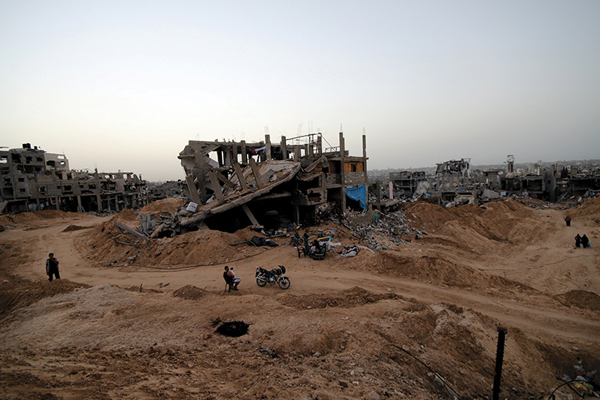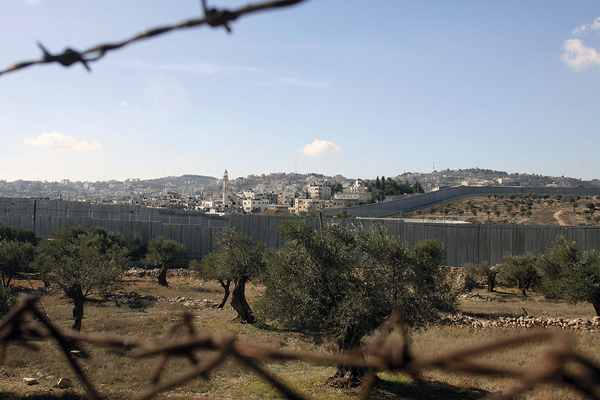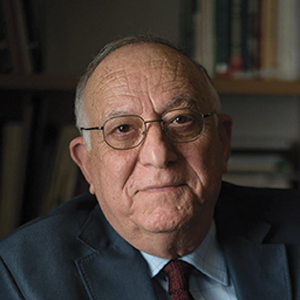
When reviewing the evolution of the international community’s role and involvement in the Israeli-Palestinian conflict, it is necessary to look first at the roots of today’s conflict (not only in Palestine but in the entire region), which lie in the period of and between the two world wars, i.e., from 1914 to 1945, when Europe, the United States, and the then Soviet Union embraced the Zionist movement’s thesis of a Jewish homeland in Palestine. At around the same time, the 1916 Sykes-Picot Agreement divided the Ottoman Arab prov¬inces into various French and British-administered areas, the 1917 Balfour Declaration supported “the es¬tab¬lishment of a Jewish national home in Pales¬tine,” and the 1920 San Remo Conference awarded the Mandate for Palestine, Transjordan, and Mesopota¬mia (Iraq) to Britain. After the collapse of the Ottoman Empire, Arab wishes were examined by the King-Crane Commission, which as early as 1919 warned against the effects of unrestricted Jewish immi¬gration and Zion¬ist plans in Palestine, but the report’s recommendations were not acted upon. On the contrary, many attempts were even made to have Arab leaders and notables acknowledge the Zionist movement’s goals, bypassing Palestinians. Throughout the British Mandate period, numerous committees – such as the Peel and the Wood¬head commissions in the 1930s – recommended the par-tition of Palestine into two states due to the fact that both sides could not live in peace to-gether, culminating eventually in the UN Partition Plan, passed as UN General Assembly Resolution 181 on November 29, 1947, which divided Palestine into Jewish and Arab states with Jerusalem and Bethlehem as a corpus separatum under a special international regime, de facto establishing the Jewish homeland that Zionists had been striving for.
♦ After 50 years of shame, it is time for the international community to live up to its international law obligations.
Following the subsequent establishment of the state of Israel in 1948 and until Israel’s occupation of the West Bank and the Gaza Strip in June 1967, international efforts were directed at having the Arab countries appease their relationships with Israel. The Palestinian cause was sidelined, framed as a refugee problem, solvable by compensation and resettlement. However, as the Palestinians increasingly realized that there was no “salvation” coming from the Arab states and therefore took their matters into their own hands (especially with and after the creation of the PLO in 1964 as their official representative), the international community began to realize the regional and international dimensions of the conflict, hence the slow but gradual recognition of the PLO during the 1970s. However, the prevailing Cold War reality did not allow for much international diplomacy, as the Arab-Israeli conflict helped maintain the bipolar world order of that time: while the USSR sided with the Arabs both diplomatically and militarily, Western countries cherished a firm bias towards Israel. The collapse of communism and the Soviet bloc roughly coincided with the first Intifada and its message, “We are here to stay, we want to coexist.” This encouraged Europe to be involved in facilitating contacts and dialogue in pursuit of the two-state solution.
Since the establishment of the PA in 1994, donor aid has become a major aspect of the international community’s role. While the donor funding to Palestine is unprecedented, it is yet seen as a fig leaf in face of the restrictions on trade and access to resources imposed by Israel, which have eroded the productive capacity of the Palestinian economy over the years, and without which, as international studies have shown, the need for donor aid would be significantly reduced. Moreover, donor aid is nowadays mainly used for budget support, with near total neglect for development support.
The international community has also invested huge sums in the development of the security sector and pushed Palestinians to cooperate with Israel on security (a highly controversial question among Palestinians), but turned a blind eye to the fact that Israeli “security” incursions into Palestinian towns and villages have been increasing; the security of Palestinians not being considered a relevant factor in this arrangement.
Especially since Oslo, the international role has taken the shape of an aid industry, using money and development to work around the occupation and mitigate third states’ inaction, rather than addressing the injustices unfolding before their eyes and living up to their legal and moral responsibilities with more decisive action than yet another report, de facto giving the occupier a license to proceed and arrogantly dismiss all those reports. The tragedy is that the international community is well aware of this but hesitant to step in due to the wider geopolitical context and its own domestic interests and politics.
In 2011, the UN declared Palestinian institutions ready for statehood, and while there are still large funds flowing in this direction almost by default, the state-building “project” is at an impasse, not least because Israel does not allow these institutions to function fully.
In light of the above, is it a surprise then that there is a widespread perception among Palestinians that the real occupation is not Israel but the rest of the world, without whose support – moral and financial – the occupation could not have been sustained for such a long time?
♦ Without real international intervention, any attempt to end 50 years of occupation is doomed to fail.
In the 50 years of occupation that have passed so far, foreign states and international bodies have kept busy with the Palestinian-Israeli conflict, trying at best to manage and contain it. Major milestones to recall include the 1973 Geneva Conference for Middle East peace; the UN’s granting the PLO permanent observer status in 1975, the 1978 Camp David Accords, the 1980 EC’s Venice Declaration, the 1981 Prince Fahd Plan, and the Arab League’s Fez Plan as well as the Reagan and the Brezhnev Plan in 1982, the 1983 Geneva International Conference, the 1988 Shultz Peace Plan, the 1991 Madrid Conference, and the subsequent bi- and multilateral talks, the 1993 Declaration of Principles, followed by the Oslo I and II Accords in 1994 and 1995, respectively, the 1998 Wye River Memorandum, the 1999 Sharm El-Sheikh Agreement, the 2000 Camp David II Summit, the 2001 Taba talks, the 2002 Arab peace initiative, the 2003 US “road map,” the 2007 Annapolis conference, the 2010 Proximity talks, the 2013 Kerry mission, and the 2016/17 French initiative.
There has probably been no other issue in the world which has seen so many initiatives launched, proposals made, conferences hosted, UN and other resolutions and conventions of international law adopted and passed, and agreements signed as the Palestine Question, though most of these “efforts” were linked to US policies and have been biased towards Israel (a look at the American voting pattern in the UN speaks volumes).
And there is no other place on earth where so many efforts have led to so few results. One may ask here, and rightly so, why the international community has failed to end the Palestinian-Israeli conflict and 50 years of occupation, although UN Security Council Resolution 242 already called in November 1967 (!) for Israeli withdrawal from the occupied territories, for mutual recognition, and for solving the refugee problem; although the legitimate rights of the Palestinian people were already officially recognized (for the first time) in a US-USSR joint statement back in October 1977; although, quite simply, all that needed to be done is apply international law and rulings to the conflict; and although the Palestinians had already made historical concessions by agreeing to negotiate on only 22 percent of their historical homeland and, on top of that, to accept the “land-for-peace formula.”

All the seemingly intractable issues at hand today are not new but have shamefully been on the table since the beginning of the occupation. And while the international community clung to the pretense of “negotiations,” Israel has effectively used the “peace process” itself to buy time and further establish more facts on Palestinian ground. Let’s take two examples – settlements and Jerusalem – to illustrate this: When the World Zionist Organization published its master plan for the development of settlements in 1978, then-US Secretary of State Vance, flanked by the USSR and Europe, called on Israel to cease settlement-building activities. Today, there are almost 600,000 settlers on Palestinian territory,i and Jews, while constituting around 52 percent of the total population in historical Palestine, utilize over 85 percent of the total land area, while Palestinians – 48 percent – utilize less than 15 percent.ii
UN Security Council Resolution 478, adopted with no vote against on August 20, 1980, is one of seven UNSC resolutions that condemn Israel’s attempted annexation of East Jerusalem, and determine “that all legislative and administrative measures and actions taken by Israel, the occupying Power, which have altered or purport to alter the character and status of the Holy City of Jerusalem (…) are null and void and must be rescinded forthwith.” Numerous UNESCO resolutions condemned Israel for its attempts to “Judaize” the historical and cultural status of Jerusalem. Today, East Jerusalem is de facto annexed, and Israel maintains its – well-documented! – discriminatory measures and policies unimpeded.
It is high time for the international community to ensure respect for international law and replace the culture of appeasement, tentative attempts, and complicity with meaningful pressure and an end to impunity. It is time for political courage and vigorous intervention to hold Israel accountable and to realize that there is no conflict but an illegal occupation that must end; that the Palestinians and Israelis must not be treated as two equal partners; that it cannot be that an occupied people is made responsible for the security of its occupier; that the entire world, including Europe and blocs such as the Non-Aligned Movement, the Organization of Islamic Cooperation, the Arab League, etc., is following the one alleged superpower, the United States; that after the failure of the Oslo process, the two-state solution is now an international responsibility.
» Dr. Mahdi Abdul Hadi holds a PhD from the School of Peace Studies at the University of Bradford, United Kingdom. He co-founded civil society organizations, including the Arab Thought Forum (1977), the Arab Council for Jerusalem (1990), the Council for Peace and Justice (1992), and the Palestinian Academic Society for the Study of International Affairs (PASSIA) in 1987, of which he has since been the chairman. Among his numerous publications are 100 Years of Palestinian History, A 20th Century Chronology (2001) and The Palestine Question in Maps 1878–2014 (2014).
i. CBS, Statistical Abstract of Israel 2016.
ii. PCBS, Press Release on the Occasion of Land Day, March 2017.


